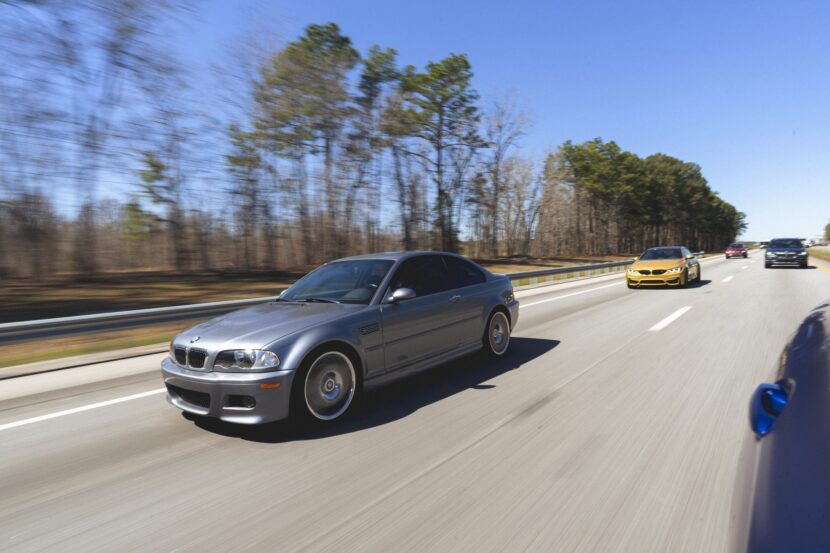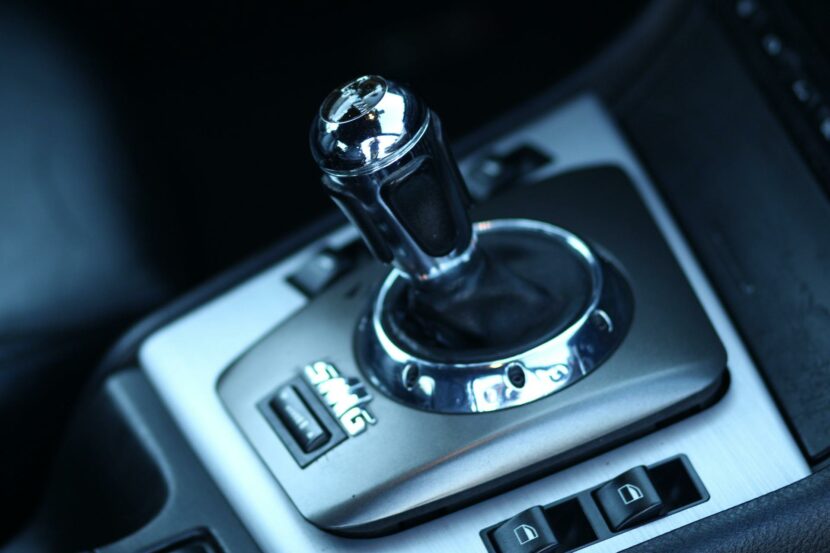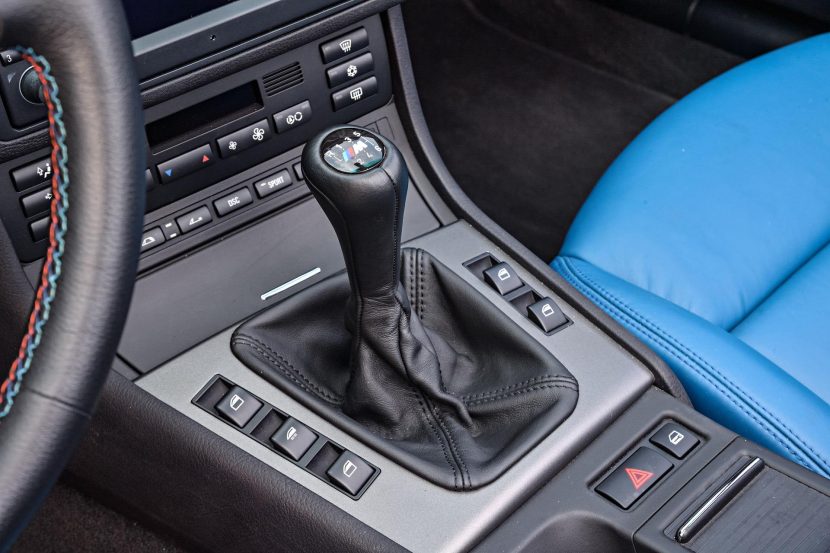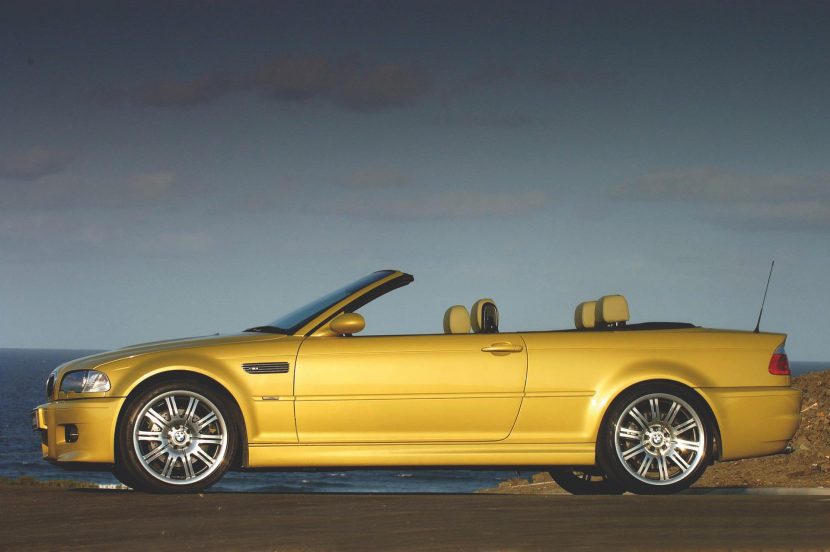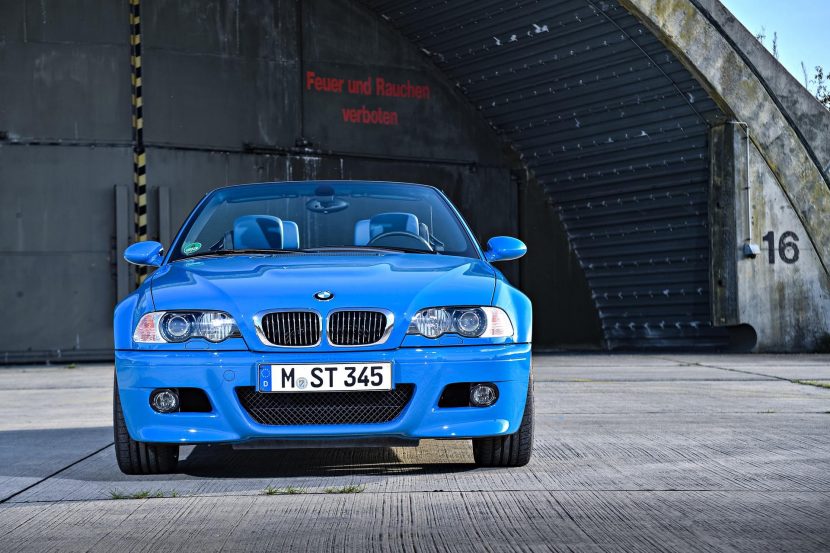You don’t have to look very hard to find kind words about the BMW E46 M3. But let me take a stab at it anyway. For one, the car is very pretty. Bulging front and rear fenders give the impression that the car was stretched over the wheels – looks befitting an “Ultimate Driving Machine”. And out of the box, the BMW E46 M3 had nearly 50/50 weight distribution, making it very neutral, with controllable and predictable oversteer.
Old-school hydraulic steering is familiar and heavy, but responsive and very communicative. Then there’s the 3.2-liter S54 inline six-cylinder engine; conjuring motorsport ghosts long departed with its unique rasp and 8,000 rpm redline shriek. Simply put, they don’t make them like this anymore – and won’t ever again.
But none of that is even remotely recent news. Nor would it a headline to state that prices for these have been consistently trending upwards. The window of time available for picking one of these legendary driver’s cars up for a palatable price is closing quickly; and this BMW guide will help you find a good one.
Engine and Transmission
First – a quick primer on the car. The BMW E46 M3 is the M3 produced between 2001 and 2006 model years. It comes in coupe or convertible flavors, and utilizes the naturally aspirated 3.2-liter S54 inline-six cylinder good for 333 horsepower and 268 pound-feet of torque. That S54 revs to 8,000 rpm, and gets paired to either a six-speed manual gearbox or a six-speed SMG II gearbox. A base M3 weighs around 3400 pounds, with exact distribution at 50.3% front and 49.7% rear.
Some optional equipment is holding up to the test of time better than others. Sunroofs were a common optional extra. But they also added 40 pounds over a “slicktop” example – making cars without sunroofs considerably more desirable to the right buyer. Leather upholstery was typically optioned, but there were a few leather/Alcantara interior options that also can command premiums.
The story is the same with manual-adjustable seats. Finally, a now-dated navigation system was optional, and most buyers prefer the “clean” look of a car without it.
2003.5+ E46 M3 LCI / Facelift and Competition Package (ZCP)
Though the lower-trim E46s received some significant updates, the M3 largely remained the same aside from the addition of LED taillights in the mid-2003 model year (hence: 2003.5). Silver Gray Metallic and Mystic Blue Metallic were added to the color palette, replacing Topaz and Steel Gray. The trunk handle was also extended.
In 2004 the now-desirable Competition Package (option code ZCP) was added. This included somewhat noticeable upgrades largely influenced by the Europe-only M3 CSL – drilled brake rotors and unique 19” wheels. You also got some Alcantara interior bits, an “M Track Mode” (think of it as intermediate stability control), modified suspension and steering ratio. But, BMW decided that cruise control was not in the competitive spirit, and so they deleted it as part of the packaging.
The Competition Package is also the only way you can get the beautiful Interlagos Blue Metallic color. These “Comp Package” cars often command a significant premium over their less competitive brethren, but all those additions are fairly easy upgrades from a non-Comp car. Whether or not it’s worth the extra cash is up to you; personally, I’d prefer to simply build to taste.
The E46 M3 SMG II Transmission
A lot of the most frequent questions about the E46 M3 revolve around the fabled “Sequential Manual Gearbox”, or SMG transmission. SMG, in its original form, debuted with the E36 M3 overseas – so the one we’ve come to know stateside is SMG II. SMG II is exactly what the name suggests – it’s a manual gearbox except shifting is handled either by the DME (in automatic mode) or by the driver, via paddles or the shifter (in manual mode). The result is faster-than-human upshifts and downshifts, or at least that is what was promised.
The SMG II will shift more consistently quickly in its most aggressive shift mode than a comparable manual car. But, there are negatives to the SMG II. All of the solenoids and particularly, the hydraulic pump, will inevitably fail one day, and it will be a very expensive and/or labor-intensive job. Secondly, the SMG II adds weight – the pump and hardware required to automate the shifting process add around 18 pounds over a traditional manual car. I also highly recommend driving an SMG II car before buying one – as there is a bit of a learning curve to driving it “correctly”.
Generally, SMG II cars will be offered at a lower asking price than an identical three-pedal car – so depending on your budget, it may be worthwhile to investigate. Lastly, since the transmissions are mechanically identical, converting an SMG car to a true manual is surprisingly easy and even cost effective – there’s plenty of DIYs online, and even shops that will handle it for you. My advice is to spare yourself, and just buy the three-pedal car, knowing you’ve done it correctly.
Reliability and Known Issues
While there is an almost infinite number of things that can break on the E46 M3, there are three points of failure that need particular attention. The first one of those is the rear subframe which, apparently, BMW engineers simply decided wasn’t a very important component at all. The welds attaching the subframe to the chassis can (will?) eventually fail, tearing the subframe away from the chassis. Many people – undoubtedly E46 M3 owners themselves – have convinced themselves that BMW “fixed the problem” in later production years.
Those are the words of self-deluding madmen; though post-2002 M3’s received a marginally enhanced design, any model year M3 can be affected. Though not all M3s are affected, all M3s are vulnerable – make sure this is a point of inspection before you purchase an E46 M3.
Variable Nockenwellensteuerung is the next failure point, but you may know it better as “VANOS“. VANOS is BMW’s version of variable camshaft timing, and the unit responsible for this is one of the other common failure points on the E46 M3. The most common fix is to simply replace the unit entirely – commonly from Dr Vanos – and rest easy. DIYers will be pleased to know that they can also order the parts independently, and repair their failed VANOS themselves. A good pre-purchase inspection will catch failing VANOS; but bear in mind that it can fail at pretty much any time. For pretty much any reason. Common symptoms include rough idle and power loss.
The last of the “Big Three” is the rod bearings service. Another BMW engineer – no doubt related to the engineer responsible for the subframe construction – decided that rod bearings simply weren’t a very crucial part of the engine. So, they used either the wrong size, or the wrong metal-compound, or both depending on who you ask. I guess someone forgot his tape measure at home that day. The rod bearings in the S54 are good for somewhere between 60,000 and 150,000 miles. But, it could be more, or less. So, Like the VANOS issues, this is another problem of “it may go tomorrow, or you might have five or six years”.
Luckily, there’s an easy way to get an idea of how far along your bearings are – analyzing the metal content of the oil. There’s a few different companies that offer this service, most in the E46 M3 community use Blackstone. Generally, owners will opt to upgrade the bearings rather than re-upping on the stock units, and there’s no shortage of options out there. There was a recall for pre-LCI (before mid-2003 model years) rod bearings; but, like the subframe, it was largely useless and rod bearings can fail on any S54-powered car.
What Other Things Can Break?
So, you’ve finally found an M3 that checks all the boxes – the right colors, the right year, the Big Three taken care of. What’s next? Well, as previously mentioned, there are a myriad of little things that can break on these cars. Hopefully, you’re getting a pre-purchase inspection – but if you’re self-inspecting, here’s a brief overview of some of the more common problems.
Typical old BMW problems will persist with the E46 M3. Window regulators for the two front windows will occasionally fail; check for slow or unusual operation. The tiny vent windows in the back also can fail, so check them too.
The cooling system is another common trouble point; particularly, leaky hoses and worn out gaskets. Check for signs of coolant leaks and get the car up to operating temperature to ensure it’s not experiencing any overheating issues. Thermostats and water pumps are usual culprits.
Here’s a weird one: a leaky rear-view mirror. The fluid used for the auto-dimming mirrors sometimes starts oozing all over the place – including out of the mirror housing itself! This will damage and stain trim and leather pieces. Check the rear-view mirror for discoloration.
The usual “used car things” apply too – check for operation of the air conditioning, make sure that the car has tires safe to drive on and brakes that will actually stop you, and check for operation of all the seat adjustments. Inspect suspension components, as by now most of these cars have either already received or will badly need refreshed bushings and/or springs and shocks.
Final Thoughts
The BMW E46 M3 occupies a unique place in automotive history, sharing a Pantheon with cars like Honda’s S2000 and Nissan’s R34 GT-R. Like the E46 M3, they capture ephemeral moments in an automaker’s history where a sports car defines the brand for a generation. Nothing that came before compared – and those that followed were never quite as memorable.
The BMW E46 M3 will continue to appreciate as each year passes. More and more will get bought up cheap, modified poorly and soon after crashed, which is sad. But just as many will be purchased as “investments” and parked for twenty years in an oligarch’s white-floored, climate-controlled garage, which is nearly equally sad. Get one before you can’t anymore. Happy hunting!




